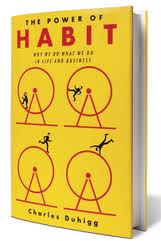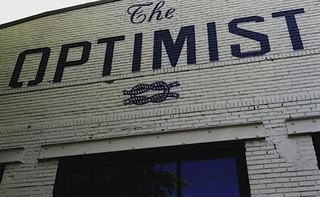Hopefully, you’ve enjoyed a wonderful Thanksgiving holiday
weekend and you’re back at work with a new sense of energy, ready to make the
push towards the year end.
In the short week before Thanksgiving, I pointed you to an
article that I found insightful and promised to follow-up with some thoughts
this week. The article was written by
Peter Weddle, and you may want to re-read it before reading today’s post.
The question I left on the table before heading off for the
holiday was, “How does Peter’s insights on social recruiting apply to the real
estate industry?” Here are some
thoughts:
1. Social recruiting via public social
recruiting via public social networks has peaked and is now in decline.
Peter makes this point several times during his discussion:
“The current incarnation of social
recruiting has been stimulated and structured by social media sites. The way we
socialize with candidates is governed by the format, functionality and focus of
LinkedIn, Facebook and Twitter. These sites enable us to promote our brands,
advertise to and connect with large pools of professionals in a wide range of
industries. These interactions have
effectively defined social recruiting as a fleeting and thoroughly functional
relationship. Basically, we’re saying to prospects: “Hey, we’re a buyer of
talent, you’re a seller of talent, let’s do a deal.”
I would further argue that the real estate industry has not
largely benefited from this stage of social recruiting anyway. The concept works well when a uniquely
talented individual is needed to fill a distinctive job position, but few people wander around wondering what a
real estate agent does—especially if they are already a real estate agent for a
competitive company. Also, since real
estate companies are always hiring, the need to get the word out concerning a
“fleeting” or difficult-to-fill job opening is inconsequential.
2. Social recruiting is becoming the creation
and ongoing development of individual allegiances between the employer and a
group of candidates.
Peter calls the shift, “Post-social recruiting,” and he
makes the following observations concerning its potential:
“Post-social recruiting means
interactions with prospects, candidates and applicants that make them feel at
home with and thus committed to an organization. It gives employers a way to forge an enduring bond – a psychological rather than
simply an electronic connection – with select talented populations.”
As we’ve mentioned in the past WorkPuzzle discussions,
private social networking technologies are empowering both companies and
candidates to make this shift. New tools
and best practices are starting to emerge that will make this a reality.
For real estate hiring managers, this change should be
welcomed. Once a few minor technology
hurdles are overcome, the skills needed for proficiency in this arena come
naturally to most managers. Why? Because they are the same skills that once
made them good agents. Think about it–building
allegiances among a large group of prospects with the expectation of
transactions developing over time is very similar to post-social recruiting.
3. Discount real estate brokers have created a
huge “career support hole” among experienced real estate agents. This hole can be filled by online career
communities inside the framework of private social networks.
If you’ve been inside the real estate industry for a while,
you may have not noticed what has happened to corporate America in the last two
decades. Peter describes it this way:
“In the early 1990s, economic
conditions and competition forced employers to change the way they dealt with
employees. They could no longer afford the expensive overhead of managing
workers’ careers, so they jettisoned both the career ladder and the gold watch.
They still employed those workers, of course, but each person was on their own
when it came to managing their career.
In the two decades since then,
individual workers have had no place to hang their career hat. No homestead
where they can get the practical and psychological support they need and
deserve. Professional societies and associations have long served that purpose
for a person’s field of work, but nothing has existed for a person’s career.
And now, the potential exists to
correct that situation and, in the process, create a formidable, new talent
acquisition strategy. Post-social recruiting involves using social technology
to create true career communities – not today’s posers that are actually databases
of candidates – without the expensive overhead of traditional corporate career
support. These virtual “careersteads” nurture allegiance among
talented workers and that bond, in turn, transforms them into genuine
employment prospects.”
If you think about it, something similar has happened to the
real estate industry in the last five to seven years (and perhaps during previous downturns as well). There has been an exodus of experienced
agents from full-service real estate firms to discount brokers who offer better
commission splits, but very little support for those agents who joined these firms.
Here is a chance at your own epiphany: The opportunity exists to engage these
“support-starved” agents who are now working for discount brokers in a cost-efficient manner through the framework of
private social networks.
If these agents
can get the career support they’re missing from a single local source, they will
eventually build trust and allegiance to the person providing that support. At the end of the recruiting process, attraction will always work better than promotion. This is the essence of attraction.
Join the WorkPuzzle Discussion at the Tidemark Online Community (TMOC)
Engage in the WorkPuzzle discussion by joining the TMOC private social network. Commenting on a public blog like WorkPuzzle can be a little intimidating, so why not join the discussion inside the privacy of the TMOC discussion group?
By joining TMOC, you’ll get to see who else is in the group and your comments will only be seen by those whom you trust. Joining TMOC is quick, easy, and free (no kidding…this takes less than 2 minutes). To get started, click here.
Already of a member of TMOC? If so, join the WorkPuzzle Dialog Group by clicking on the WorkPuzzle Group icon on the left side of your TMOC homepage. Questions? Email the WorkPuzzle editor (workpuzzle@hiringcenter.net) and we’ll walk through the process.
 Editor’s Note: This article was written by Ben Hess. Ben is the Founding Partner and Managing Director of Tidemark, Inc. and a regular contributor to WorkPuzzle.
Editor’s Note: This article was written by Ben Hess. Ben is the Founding Partner and Managing Director of Tidemark, Inc. and a regular contributor to WorkPuzzle.
 I’ve personally pondered this question even more than usual in the last few months
I’ve personally pondered this question even more than usual in the last few months Editor's Note: This article was written by Ben Hess. Ben is the Founding Partner and Managing Director of Tidemark, Inc. and a regular contributor to WorkPuzzle.
Editor's Note: This article was written by Ben Hess. Ben is the Founding Partner and Managing Director of Tidemark, Inc. and a regular contributor to WorkPuzzle. 










